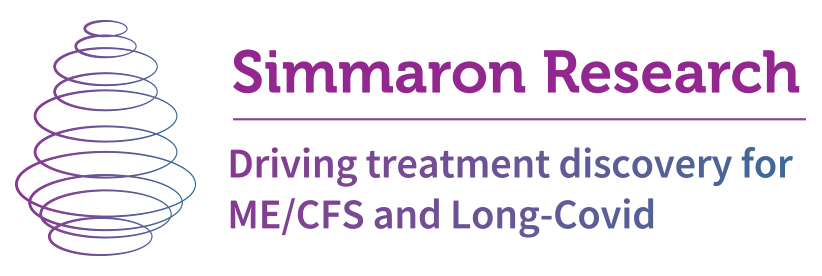Catching ME/CFS in the Act: The Collaborative on Fatigue Following Infection (COFFI)
It sounds like a great idea - combine all the post-infectious fatigue studies together into one database in order to find answers to one of the biggest questions in ME/CFS - why do some people stay ill after an infection while others recover? COFFI (Collaborative on Fatigue Following Infection) incorporates no less than 9 studies that have examined post-infective fatigue or illness. The Dubbo study - pioneered by Andrew Lloyd and funded by Australian Health Agencies and the Centers for Disease Control (CDC) in the U.S., still in some ways the best study - started it all off.The most dramatic conclusion of the first Dubbo study was that somewhere around 10% of people exposed to a serious infection remained ill six months later. Remarkably, the kind of infection - viral or bacterial - didn't matter. It seemed that being exposed to any serious infection left one at risk for a prolonged fatiguing illness.Since the Dubbo studies began, eight other post-infectious cohort studies have finished up or are underway. The largest of these are the four Chicago cohort studies (about 1000 participants) under the direction of Ben Katz and Lenny Jason, which have been examining infectious mononucleosis college students for almost ten years. There's also campylobacter gastroenteritis (n=600), Legionnaires disease (n=190), and Ross River Virus (n=60) cohorts. All told, about 3000 people have participated in 9 studies which have examined people who failed to recover from an infection.COFFI believes that susceptible individuals develop prolonged fatigue after infection because of biological (immune system, autonomic nervous system, etc.), behavioral and/or environmental effects, which produce alterations in neurobehavioural, cardiovascular and/or immunological systems. The goal of the collaborative is to elucidate what went wrong in those with post-viral (and bacterial) illnesses.On the face of it, the collaboration holds great promise. How better, after all, to learn about how an illness develops than to capture it in its earliest stages?
COFFI (Collaborative on Fatigue Following Infection) incorporates no less than 9 studies that have examined post-infective fatigue or illness. The Dubbo study - pioneered by Andrew Lloyd and funded by Australian Health Agencies and the Centers for Disease Control (CDC) in the U.S., still in some ways the best study - started it all off.The most dramatic conclusion of the first Dubbo study was that somewhere around 10% of people exposed to a serious infection remained ill six months later. Remarkably, the kind of infection - viral or bacterial - didn't matter. It seemed that being exposed to any serious infection left one at risk for a prolonged fatiguing illness.Since the Dubbo studies began, eight other post-infectious cohort studies have finished up or are underway. The largest of these are the four Chicago cohort studies (about 1000 participants) under the direction of Ben Katz and Lenny Jason, which have been examining infectious mononucleosis college students for almost ten years. There's also campylobacter gastroenteritis (n=600), Legionnaires disease (n=190), and Ross River Virus (n=60) cohorts. All told, about 3000 people have participated in 9 studies which have examined people who failed to recover from an infection.COFFI believes that susceptible individuals develop prolonged fatigue after infection because of biological (immune system, autonomic nervous system, etc.), behavioral and/or environmental effects, which produce alterations in neurobehavioural, cardiovascular and/or immunological systems. The goal of the collaborative is to elucidate what went wrong in those with post-viral (and bacterial) illnesses.On the face of it, the collaboration holds great promise. How better, after all, to learn about how an illness develops than to capture it in its earliest stages?
The Post-Infectious Illness Group
Different flavors of post-infectious illness exist. One set involving diseases like acute disseminated encephalomyelitis and Guillain-Barre Syndrome produces very dramatic symptoms (paralysis, coma) and is studied. The other produces less dramatic symptoms (fatigue, cognitive problems, PEM) etc., but despite the tremendous functional hits seen, has mostly skated under the scientific establishment's radar.The studies that have emerged in the second group look like the kind of studies you would expect from a niche topic. They tend to be underfunded, focus on more easily and cheaply assessed factors, are often light on biological analyses, and sometimes focus on behavioral factors.Nevertheless, some foundational findings have emerged. First - any serious infection is going to incapacitate a significant subset of those afflicted. The results have been remarkably consistent across types of infectious onset, with most showing from 9-13% of those encountering a serious infection of any type are still ill at six months and 7-9% remain ill a year later.That's obviously not a small number of people.Lloyd, the senior author of the collaborative, has enrolled a mishmash of partners. They include biologically oriented members (Ben Katz, Renee Taylor, Ute Vollmer-Conna, Knut-Arne Wensaas, Jeannine L.A. Hautvast), some in-betweener's (Brun Wyller, Dedra Buchwald, Renee Taylor) and some behaviorists (Peter White, Esther Crawley, Gabrielle Murphy, Rona Moss-Morris).
The Epidemiological Efforts
GiardiaThe Bergen Giardia studies demonstrate the funding woes present in this field. They've succeeded in documenting high rates of ME/CFS, chronic fatigue and/or irritable bowel syndrome (IBS) years after an extended Giardia outbreak in Norway. The studies have established that the outbreak has had a significant health impact on a substantial number of people - an important finding for sure - but it's been unable, until recently, to delve into any biological factors. (A genetic study is underway.)
The Biopsychosocial Efforts
Moss-Morris's work shows that cognitive behavioral therapy (CBT) has moved into clearly defined biological illnesses such as MS and renal disease. She's managed to study the behavioral aspects of fatigue and/or conducted CBT trials in no less than five diseases - ME/CFS, IBS, multiple sclerosis, renal disease and cancer. (The MS CBT trial was deemed successful.)Moss-Morris assessed epidemiological and biopsychosocial factors in people who became ill following a campylobacter infection (food poisoning). Ironically, that study suggested that those who tried hardest to ignore or push past their illness (e.g. who felt “I must not let this get the better of me” and who engaged in all-or-nothing behavior) were most likely to get ill. (So much for the malingering hypothesis). Psychologist Peter White must have been chagrined to find that his Bart cohort failed to indicate that mood disorders or negative life events contributed to a "fatigue syndrome" after an infection.The results of Buchwald's 2000 infectious mononucleosis study must have flummoxed everyone.It suggested that a greater number of life events more than six months before the illness began and increased family support were predictive of those who remained ill.The Q fever studies ended up with a similarly hard to understand mix of factors. Female gender, being younger, having a pre-existing health condition, and being hospitalized in the previous 3 months might make some sense, but why would consuming no alcohol and using medication contribute to a prolonged illness?The Qure study found that long-term doxycycline treatment utterly failed to move the needle on the illness; i.e. a persistent bug is not responsible. CBT, on the other hand, improved fatigue and symptoms somewhat but completely failed in the most important measure - improving functionality. (By reducing stress, behavioral therapies should provide some symptom reduction...)The lack of a recognizable theme suggests that the biopsychosocial results are not getting at the root of anything. If the goal is illness eradication, researchers need to dig into the biology, and biological efforts have indeed achieved better results.
Psychologist Peter White must have been chagrined to find that his Bart cohort failed to indicate that mood disorders or negative life events contributed to a "fatigue syndrome" after an infection.The results of Buchwald's 2000 infectious mononucleosis study must have flummoxed everyone.It suggested that a greater number of life events more than six months before the illness began and increased family support were predictive of those who remained ill.The Q fever studies ended up with a similarly hard to understand mix of factors. Female gender, being younger, having a pre-existing health condition, and being hospitalized in the previous 3 months might make some sense, but why would consuming no alcohol and using medication contribute to a prolonged illness?The Qure study found that long-term doxycycline treatment utterly failed to move the needle on the illness; i.e. a persistent bug is not responsible. CBT, on the other hand, improved fatigue and symptoms somewhat but completely failed in the most important measure - improving functionality. (By reducing stress, behavioral therapies should provide some symptom reduction...)The lack of a recognizable theme suggests that the biopsychosocial results are not getting at the root of anything. If the goal is illness eradication, researchers need to dig into the biology, and biological efforts have indeed achieved better results.
Biological Efforts
The studies that have dug deeper into biology appear to have been more successful. Blood tests in the Dubbo studies suggested that pathogen persistence was not the issue: in every case the pathogen appeared, at least, to have been vanquished.The results of the Qure study on the effectiveness of long-term doxycycline treatment in those with prolonged Q fever suggested the same: it found that the standard treatment for the disease had no effect at all on those who remained ill.Nor did immune activation over time - as measured by cytokine levels - appear to cause disease persistence in the Dubbo group.The only risk factors identified occurred early in the illness. Higher levels of cytokines and symptom severity early in the illness appeared to set the stage for a prolonged illness. This suggested that the bug - whichever bug it was - did its damage early and then disappeared.Genetic studies then suggested a reason why. Immune gene polymorphisms were found in this group which predisposed them to a heightened immune response when confronted with a pathogen. With three studies confirming and extending that finding, it seems solid. It appears that people with polymorphisms in specific immune genes that heighten the inflammatory response are more likely to become and stay ill. The ongoing Chicago infectious mononucleosis studies have dug a bit deeper biologically and uncovered some interesting findings. Autonomic symptoms and early illness severity were predictive of a prolonged illness (while perceived stress, stressful life events, family stress, difficulty functioning and attending school, and psychiatric disorders were not).Six months of illness resulted in lower oxygen consumption and reduced peak oxygen pulse; i.e. problems utilizing oxygen - something that Hanson's latest metabolomic study and others suggested may be happening. (The authors called this “reduced fitness" and "efficiency of exercise."). Plus, a network analysis was able to diagnose 80% of ill patients using immune factors, and at six months autonomic nervous symptoms stood out. The analysis suggested a powerful pro-inflammatory immune state persisted for as long as 24 months after the initial onset.The new "Dubbo studies" ("The Sydney Infectious Outcomes Study (SIOS)) have found an early reduction in heart rate variability, suggesting autonomic nervous system involvement.In contrast to the biopsychosocial-oriented studies, a theme may be emerging in the biological studies: immune activation and autonomic nervous system problems early, resulting possibly in problems with oxygen utilization, with autonomic nervous system problems persisting.
The ongoing Chicago infectious mononucleosis studies have dug a bit deeper biologically and uncovered some interesting findings. Autonomic symptoms and early illness severity were predictive of a prolonged illness (while perceived stress, stressful life events, family stress, difficulty functioning and attending school, and psychiatric disorders were not).Six months of illness resulted in lower oxygen consumption and reduced peak oxygen pulse; i.e. problems utilizing oxygen - something that Hanson's latest metabolomic study and others suggested may be happening. (The authors called this “reduced fitness" and "efficiency of exercise."). Plus, a network analysis was able to diagnose 80% of ill patients using immune factors, and at six months autonomic nervous symptoms stood out. The analysis suggested a powerful pro-inflammatory immune state persisted for as long as 24 months after the initial onset.The new "Dubbo studies" ("The Sydney Infectious Outcomes Study (SIOS)) have found an early reduction in heart rate variability, suggesting autonomic nervous system involvement.In contrast to the biopsychosocial-oriented studies, a theme may be emerging in the biological studies: immune activation and autonomic nervous system problems early, resulting possibly in problems with oxygen utilization, with autonomic nervous system problems persisting.
Wyller's Weird Results Or Why a Poor Study is Worse Than No Study at All
Many of the post-infective studies have been confined to charting epidemiological factors. Only the initial Dubbo study and the Katz/Taylor Chicago studies have tried to dig deeply at all into biological factors. Even then the scope of the studies has been limited.Brun Wyller's CEBA studies (Chronic Fatigue Following Acute Epstein-Barr Virus Infection in Adolescents) appeared at first glance, to fix that. The three studies analyzed 149 factors including early illness severity, immune factors, neuroendocrine stress response, cognitive functioning, emotional disturbances, genetics/ epigenetics of candidate genes, personality traits, and critical life events during and after infectious mononucleosis (IM).
Steps Per Day
The first CEBA study (Lifestyle factors during acute Epstein Barr virus infection in adolescents predict physical activity six months later) assessed the effects of the 149 factors on the number of steps taken per day at six months in 200 individuals. None of the markers of infection or immune response studied affected activity levels. (Nor did any psychological factors).Instead, three factors - none of which showed up previously in the post-infectious studies - did. Baseline physical activity (steps per day), substance use (alcohol and illicit drugs), and human growth hormone were associated with reduced steps per day after six months. (Notice the opposing substance use results: low alcohol use was a risk factor for post-Q fever illness, while increased alcohol/substance use was a risk factor for post-infectious mononucleosis illness).The results suggested that sedentary individuals with low HGH levels who were abusing alcohol/drugs and who became ill with IM are predisposed to be, guess what, more sedentary than usual six months after coming down with infectious mononucleosis.That's among the most underwhelming and just weird results I've ever seen, and one wonders why Wyller bothered to publish it.
Predictors of Chronic Fatigue
Predictors of chronic fatigue in adolescents six months after acute Epstein-Barr virus infection: A prospective cohort study.Another study of Wyller's cohort charted biological factors against fatigue at six months. The main finding that a bunch of symptoms (sensory sensitivity, pain severity, functional impairment, negative emotions) were associated with increased fatigue simply stated the obvious. The more fatigued a person was, the more negative emotions they had (what a surprise!), the more functionally limited they were (!!!!), and the more pain they were in (stunning!), etc.The fact that viral load had no predictive value was in line with past studies. The slightly increased plasma C-reactive protein found (Wyller suggested it was caused by negative life events) and reduced plasma vitamin B12 levels were the only two biological factors that stood out. Neither will move this field forward significantly.
Predictable Results?
So how did Wyller get such pitiful results?It turned out the study was not as comprehensive as the 149 factors made it appear to be, and was rudimentary to boot. Included in that 149 factor set were standard blood tests, demographic results, psychological testing, etc. Wyller used a Fatigue Scale - the Chalder Fatigue Scale - believed be problematic in ME/CFS. His immune tests mostly consisted of immune cell counts which have historically not been particularly effective. Natural killer cell cytotoxicity - which has consistently been found to be low in ME/CFS - was not done.The one stressor used - during the autonomic nervous system testing (deep breathing while supine and during 3 minutes of standing) - was too mild (at least a 10 minute tilt table test is needed to diagnose POTS).While changes in heart rate and blood pressure have been found in ME/CFS, heart rate variability is a more discerning factor and has been more commonly assessed and found altered in ME/CFS - but was not used in Wyller’s study. The cortisol blood test Wyller used has not been found effective in ME/CFS. (Blood cortisol awakening response and morning saliva cortisol tests (not done) have been more effective).All in all, the study - with its lack of a significant stressor, its limited testing protocol and the use of measures which have not proved useful in ME/CFS - appears to have been almost doomed to failure. One wonders why Wyller expected to find anything at all, and the results probably could have been predicted.They also, not surprisingly, opened the door wide open to a biopsychosocial interpretation of ME/CFS that Wyller walked right through. Wyller reported that,
Wyller used a Fatigue Scale - the Chalder Fatigue Scale - believed be problematic in ME/CFS. His immune tests mostly consisted of immune cell counts which have historically not been particularly effective. Natural killer cell cytotoxicity - which has consistently been found to be low in ME/CFS - was not done.The one stressor used - during the autonomic nervous system testing (deep breathing while supine and during 3 minutes of standing) - was too mild (at least a 10 minute tilt table test is needed to diagnose POTS).While changes in heart rate and blood pressure have been found in ME/CFS, heart rate variability is a more discerning factor and has been more commonly assessed and found altered in ME/CFS - but was not used in Wyller’s study. The cortisol blood test Wyller used has not been found effective in ME/CFS. (Blood cortisol awakening response and morning saliva cortisol tests (not done) have been more effective).All in all, the study - with its lack of a significant stressor, its limited testing protocol and the use of measures which have not proved useful in ME/CFS - appears to have been almost doomed to failure. One wonders why Wyller expected to find anything at all, and the results probably could have been predicted.They also, not surprisingly, opened the door wide open to a biopsychosocial interpretation of ME/CFS that Wyller walked right through. Wyller reported that,
"Taken together, the results seem to support a biopsychosocial rather than a biomedical perspective on the development of chronic fatigue and CFS."
Lenny Jason's Chicago Studies
The next Chicago studies, led by Lenny Jason, will examine many more biological factors in its next iteration. Unlike the Dubbo, Giardia, Wyller's studies and others, Jason's samples predate the illness onset, giving him the potential to uncover biological risk factors present before a person became ill.He has blood samples from over 4,000 students, 4-5% of whom contracted infectious mononucleosis, which they are following. Papers should start appearing this spring/summer. As of October 2018, Jason was still in the process of applying for grants to study blood and saliva factors. They hope to study autonomic functioning, cytokine, metabolomic and saliva biological risk factors.Jason's preservation of his samples in a deep freeze means they'll be able to be assessed as we learn more about ME/CFS over time. They provide the potential for uncovering perhaps the greatest mystery of all in ME/CFS - what was going on before ME/CFS actually hit that put one at risk for it?
Conclusion
Time will tell if the The Collaborative on Fatigue Following Infection (COFFI) will help, hurt or do anything at all. If the embarrassingly rudimentary website with its weird ads is any indication, the group may not amount to much.Wyller's efforts indicate that rudimentary, poorly targeted efforts can do more harm than good if the authors decide to default to a historical norm: if you can't find something biological, a biopsychosocial explanation must apply. His results and other biopsychosocial study results are so bizarre, though, that one wonders if anyone will take them seriously. The biological efforts are another story. These cohorts offer the enticing possibility of catching the disease in the act as it first manifests itself. The first post-infectious fatigue studies - the Dubbo studies - are still some of the best, and outlined some findings that have continued to stand: illness severity is a major risk factor and the bugs that triggered the illness in the first place don't appear to play a role in prolonging it. The early cytokine and genetic results fit that picture: they suggest a stronger than usual early immune response may set the stage for ME/CFS.Incorporating more sophisticated tests, the Chicago infectious immune studies add the possibility of long-term autonomic nervous system problems, further suggest immune issues play a role and, intriguingly, provide the first signs of impaired energy production during exercise.Jason, if he can get the money to test his samples, has the opportunity, with his metabolomic, autonomic nervous system and immune testing, to provide more insights into how this illness got started in the first place and why it remains. Plus, his frozen samples provide the opportunity for future researchers to dig even deeper into these questions. They should prove invaluable.
The biological efforts are another story. These cohorts offer the enticing possibility of catching the disease in the act as it first manifests itself. The first post-infectious fatigue studies - the Dubbo studies - are still some of the best, and outlined some findings that have continued to stand: illness severity is a major risk factor and the bugs that triggered the illness in the first place don't appear to play a role in prolonging it. The early cytokine and genetic results fit that picture: they suggest a stronger than usual early immune response may set the stage for ME/CFS.Incorporating more sophisticated tests, the Chicago infectious immune studies add the possibility of long-term autonomic nervous system problems, further suggest immune issues play a role and, intriguingly, provide the first signs of impaired energy production during exercise.Jason, if he can get the money to test his samples, has the opportunity, with his metabolomic, autonomic nervous system and immune testing, to provide more insights into how this illness got started in the first place and why it remains. Plus, his frozen samples provide the opportunity for future researchers to dig even deeper into these questions. They should prove invaluable. 
